"It is no good getting furious if you get stuck. What I do is keep thinking about the problem but work on something else. Sometimes it is years before I see the way forward. In the case of information loss and black holes, it was 29 years." -Stephen Hawking
When we look out at the Universe, you know what it is that we see.
Light! Light from stars, galaxies, clusters, etc., covering all the different wavelengths you can measure.
But there weren't always stars, galaxies, and clusters in the Universe. When the Universe was first "born," in fact, the densest places were only a few thousandths of a percent denser than average. It took gravity tens of millions of years in the densest locations to form even the very first stars.
But our earliest pictures of the Universe come from when it was much younger than that: when it was just 380,000 years old! That would be the Cosmic Microwave Background, where the "cold" spots (shown in blue) and the "hot" spots (shown in red) represent the "thousandths-of-a-percent" difference from one location to another.
This image is more than just a pretty picture, it provides some of the best data of the early Universe that we've ever collected.
One of the fun things we can do (well, fun if you're a theoretical cosmologist) is to look at the size of these temperature differences on different-sized scales. Are the temperature fluctuations bigger on large scales? On small scales? Let's take a look...
Now, if you're like most people, this just looks like a bunch of points and wiggles. Which is fine; I don't expect you to have spent a decade (or more) of your life studying this as an undergraduate, graduate student and scientist. But you can learn a whole lot about the Universe from doing this. For example, you might want to know how much of your Universe is made up of dark matter?
And, as you can see, if you adjust the amount of dark matter in your Universe, the shape of your wiggles adjusts, too! We can do similar things for the amount of normal (atomic) matter, dark energy, neutrinos, etc.
But we can also learn whether we get bigger, smaller, or similar-sized fluctuations on smaller, non-cosmic scales. And what we find is that fluctuations are scale-invariant, which means that these fluctuations are the same few thousandths-of-a-percent on all scales.
That's good!
If the fluctuations were much, much larger on very tiny scales, we could have a Universe filled with tiny black holes, ranging in scale from the size of Jupiter down to sub-atomic sizes.
Now, our observations disfavor this idea, but they aren't sufficient to rule it out. But I was nonetheless surprised to come across this National Geographic article:

It comes from a paper that's about a month old, and so I decided to go through the science for myself.
Their major idea is that there are these tiny, minuscule black holes that are physically smaller than a single atom, but are about the mass of a thousand cars.
Now, those of you familiar with microlensing searches know that black holes from the early Universe that are more massive than our Moon or so are ruled out as existing in great numbers, but we can't definitively rule out less massive ones.
Unless they're less massive than a large mountain: about a billion tonnes. They are all gone by now, because black holes evaporate!
Even though we are talking about gravity here, we can't just turn off quantum mechanics! The vacuum itself -- populated by particle-antiparticle pairs -- causes black holes to slowly radiate their mass away through the process of Hawking radiation.
Perhaps paradoxically, the smaller and lighter your black hole is, the faster it evaporates! For a black hole of the mass that these authors are proposing, the evaporation time is about two minutes!
You can't just pretend that since Hawking radiation hasn't been directly observed (it's not like we have a convenient black hole to study in this type of detail) that the laws of physics suddenly don't apply. In fact, the experimental analog of black holes that was built showed the analogous effects to Hawking radiation!
As far as we can tell, all the evidence points away from the existence of primordial black holes. While they're a fun theoretical toy, there's no reason to expect they actually exist. Furthermore, if they did exist, they would still be subject to the laws of quantum mechanics, and thus would evaporate. You can't selectively turn off quantum physics when it's inconvenient for you, as I've detailed before. If you want to say something sensible about what physically exists, you need to follow the laws of physics.
So, in summary, if you did turn off quantum mechanics (which you can't), and you allowed 100% of the dark matter to be these thousand-tonne black holes (for which there's no reason or mechanism), then you'd have "miniature black holes" everywhere. Or, at least, one or two of them passing through Earth per day. At least the authors get one thing right: even in this worst case scenario, they're still totally harmless.



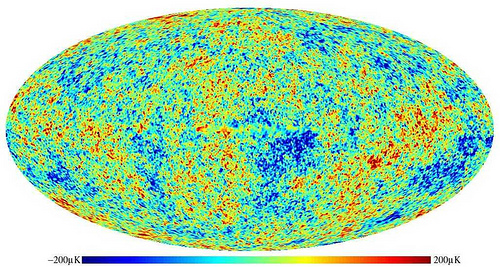

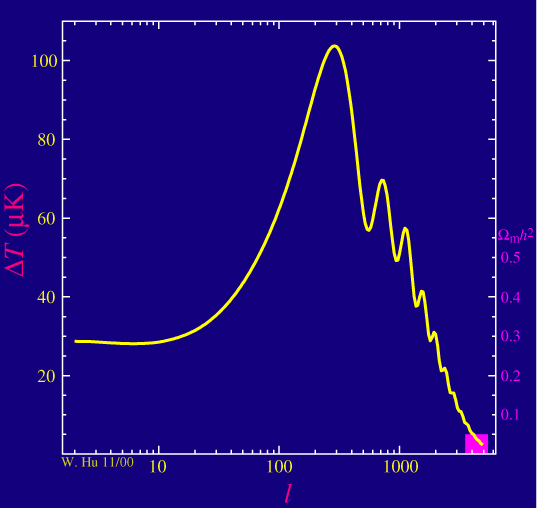


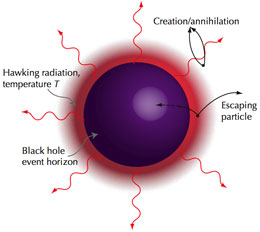
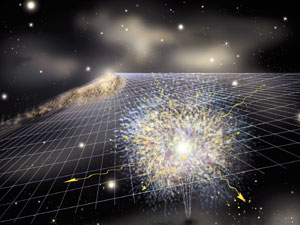
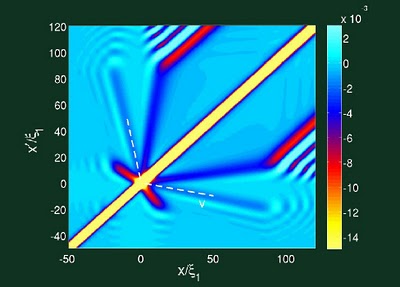
Thank you for this interesting article. I'm glad I found it.
But what about the mini black hole that caused the Tunguska explosion? The anniversary of which is almost upon us. I can't believ you didn't even mention that. ; )
âthe mini black hole that caused the Tunguska explosionâ
Yay! Vurdalak!
http://www.singularitythebook.com/
http://www.vurdalak.com/
:D
As far as I can tell the analogous effects of Hawking radiation demonstrated by Carusotto et al are also/i> simulations, not real-world measurements. Still an interesting paper.
Just to play the devils advocate here,
IF a micro black hole (MBH) is created, say within Andromedaâs outer edge and for some reason, oh lets say by a freak of nature a series of violent relaxation events causes an acceleration at relativistic velocities through a less than empty vacuum space and itâs trajectory is aimed at earth, Given the unlikely aspect of this relativistic (less than stellar) MBH to coalesce mass at the same rate of dissipation by HR,
Is it conceivable that this conservable life time could be extended by time dilation? (such as a Muon can)
Iâm thinking the acquisition of mass, even at the equal rate of HR dissipation would tend to slow the mass and without constant kicks to maintain velocity, It would slow down and gamma out. Sound right?
So it would need a lot of kicking, in a perfect environment, right?
Or have I neglected something?
AS far as primordial micro black holes as a form of dark matter being a possibility, I concur, very unlikely,
yet it does bring the question, what if any forms of space could be evaluated by the demise of black holes in general, you know a goldilocks black hole, not too big and not too small, yet just right to detect a growing fuzz ball of radiation from the dissipation of this event. Could we see or detect it with anything we have in our toolbox of detectors?
Has anyone ever written a paper on the possibility of relativistic BHâs and the wake/tail that would subsume.
Itâs hard for me to imagine a mobile BH (for any great length of time)in anything other than an absolute, empty, space, which as far as I know does not exist within our Universe⦠and even then it should eventually dissipate.
To clarify, It's hard for me to imagine a mobile black hole that does not have a feeding/coalescing rate able to keep it from dissipating/radiating, so in effect a black hole in the center of a galaxy can be mobile, such as Andromeda and the milky way, eventually merging, but, if say the milky way fully coalesced into a black hole then it could not move intact in relation to the surrounding space.
It would be fixed.oh I suppose they could move somewhat but they wouldn't get very far.
Non-feeding black holes are fixed in relation to local space and only gain distance according to the expansion of space.
Any black hole without the capability to feed must radiate and die, and if their momentum is greater than the surrounding space, they die much quicker, So primordial black holes...I think not.
Poor little black holes, someone should start a save the little black hole fund and take down those signs that say *don't feed the black holes*
Why would having a higher momentum cause it to evaporate so quickly? IIRC, the normal lifespan of a stellar-mass black hole is enormous--wikipedia suggests it's 10^67 years. I can't imagine momentum changing it THAT much.
Obviously, primordial black holes are expected to be much smaller. But it's not incredibly difficult to imagine a black hole, say, flung off by an orbital partner that went supernova to reach fairly high speeds.
Not sure if that's what you were thinking of, though.
Unless they're less massive than a large mountain: about a billion tonnes. They are all gone by now, because black holes evaporate!
I've never liked it when people phrase black hole evaporation like this, because it appears to imply that there aren't, or can't be, any mini black holes that are a billion tonnes now (or smaller sized ones, etc).
There can be such sized black holes now, of course, if they were larger in the past, such that they've evaporated down to a billion tonnes today (and smaller sized ones, etc).
Small black holes can't accrete. The light pressure at the event horizon is too high.
I think primordial black holes that could still be in existence today has more to deal with the density of the primordial space and itâs accelerated rate of expansion, if black holes were able to gain a greater mass earlier in the development of the Universe, then the expansion rate would not have been able to stop total coalescence earlier on. I donât think that a good analogy of eras such as (our star is a third generation star) can be applied to black holes such as (we are in the third major BH coalescing period or era) but I could be wrong, Yet what we see strongly suggest that if eras do exist for black holes-they donât correspond to the same time frame as lesser phenomena like stars.
Any decent sized black hole, from the distant past, that ran out of fuel/food/mass to coalesce would be in an environment that is now lacking mass such as a void.
As far as mobility of black holes being able to move through the curvature of space, they would have to be less of an impact on the space that they attempt to move through otherwise the space conforms and not the BH and IF it was possible for a massive BH to have been in existence so long ago, by the time it became a micro black hole, the amount of void it would have to move through would be overwhelmingly enough time for itâs demise.
The way itâs looking, IF space/vacuum did not expand at a accelerated rate the black hole coalescent would gain a greater foot hold in itâs rate of growth, since we know that the growth/coalescence/feeding pattern of black holes is governed by laws that we understand, it becomes a catch 22 issue, the greater in diameter the Universe expands, the greater itâs velocity has to increase, so that black holes maintain a consistent rate of acquisition of matter.
Or to look at it conversely the greater black holes become in mass (as a total BH product as a Universal whole), the greater the accelerated constant has to become to counter black hole acquisition.
Yeah, yeah, kind of Ying Yangâ¦. ish
*and no I'm not a guru or even subjective to any such mental flam*
The true gauge to life span of our existence is hard to define using space expansion, or black hole coalescence, the more accurate gauge is the particle decay of normal matter (not radio decay).
So interest in proton decay is relevant to normal matter and is a proper gauge to determine expansion and coalescence environment life spans.
A black hole below a certain size will be subdued by the gravity metric and lose energy to that metric unless supported by other means.
Black holes coalescent rates as we know them in a NON expanding Universe would signal the expedient demise of normal matter and an accelerated expanding Universe as we know it in a NON coalescing black hole environment would signal the expedient demise of normal matter.
Both actions serve to tear and take normal matter, yet in their balanced power struggle normal matter WINS.
The question is how long does it take to deplete dark matter, is itâs depletion rate directly tied to the abstract sum of expansion and coalescence? Does this equation govern proton decay?
There is a reason we as humans think in the terms that we do, you know (good and evil) itâs our environment you seeâ¦and no BHâs are not good or evil nor is the expansion, itâs just opposing forces...really.
As a personal note, I only have till the end of this month to post my personal thoughts/conjectures so I'll take this op to post a favorite song one last time.
If it works as it's looking, we have a very long time to exist in the Universe, though we need to maintain this planet with consideration that it may be a while before we are able to relocate... take care<?a>
Well thatâs how I see it, but then who am I?
Thanks for such an interesting article. There is an old saying, "As above, so below" Seems to apply here, don't you think?
"Why would having a higher momentum cause it to evaporate so quickly?"
The radius curvature, IIRC.
Mathematically, the event horizon has an entropy associated with it and that requires a temperature, so temperature varies with the surface area, r squared.
But the radiation from a black body varies with temperature to the fourth power.
Which in this case means r^8.
And the radius depends linearly on the Mass of the object.
so an earth-weight black hole is ~100,000x smaller than a solar-weight one. And the radiation would be 10^56 higher.
Since the mass is also less by that factor, the age before complete evaporation (if we ignore the accelerating radiation as the mass is lost) is 10^63 times shorter.
All off-the-head calculation, but it's easy to see how quickly the time to die shortens considerably.
Regarding th TT Power spectrum graphs. Can somebody point me to a good introductory level explanation of this (with some detail: Here's what the axis means, here's the equations and the variables, here's how you input dark matter versus neutrinos into the wiggle). Thanks for any pointers.
On mini black hole evaporation versus accretion, thank you daedalus2u for that explanation.
If you follow National Geographics links you find that they are publishing more speculative science e.g. Particles Larger Than Galaxies Fill the Universe?http://news.nationalgeographic.com/news/2009/06/090602-particles-larger…
It seems like National Geographic is trying to increase readership by publishing "sensational speculative science" not always with adequate disclaimers.
Then again, all fundamental particles, aka electron, quarks, et al., are plausibly micro-miniature black holes.
I've read the article on National Geo. Your article is more convincing. Thank you Ethan. I wanted to forward you the article to get your comments on, you did it nice though.
Who would like to hear something they didn't consider about black holes. I have an thought!
"Then again, all fundamental particles, aka electron, quarks, et al., are plausibly micro-miniature black holes."
Well, not really.
They let stuff out, for example.
"Small black holes can’t accrete."
They can.
Not fast enough today (energy density too low) to gain mass by accretion.
But the statement you gave there is wrong in the same way as the people proclaiming the greenhouse effect disobeys the second law of thermodynamics have it wrong when they claim "a colder body can't warn a hotter body".
Atleast it would help explain where my socks disappear to in the dryer.
I think the theory of "Black Holes smaller than atoms existing" is impossible. Ive heard that eventually black holes can radiate at the force of multiple nuclear bombs, according to Hawking Radiation. So, if small black holes do exist, we would all be blown up. Big time.
Yeah, this is mentioned by Nassim Haramein all the time. I'm excited to find all of the things we need to know. God is in control. Message me I have little revelations I want to share. End is near so as is God.
Nah, I'm god and I gave up control 3000 years ago when I buried all those fake fossils as a giggle and you idiots took it seriously.
I'm working on an actually useful species now.